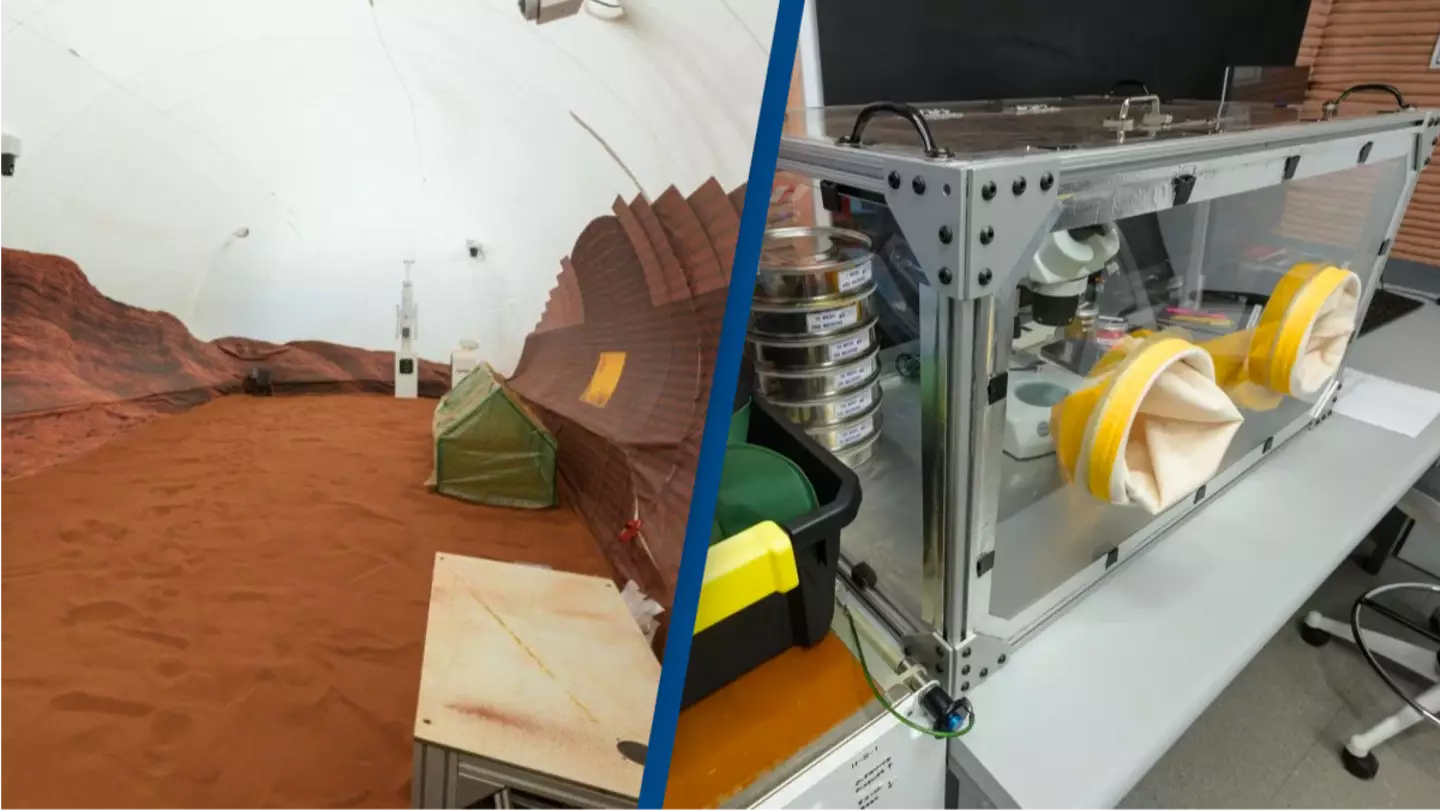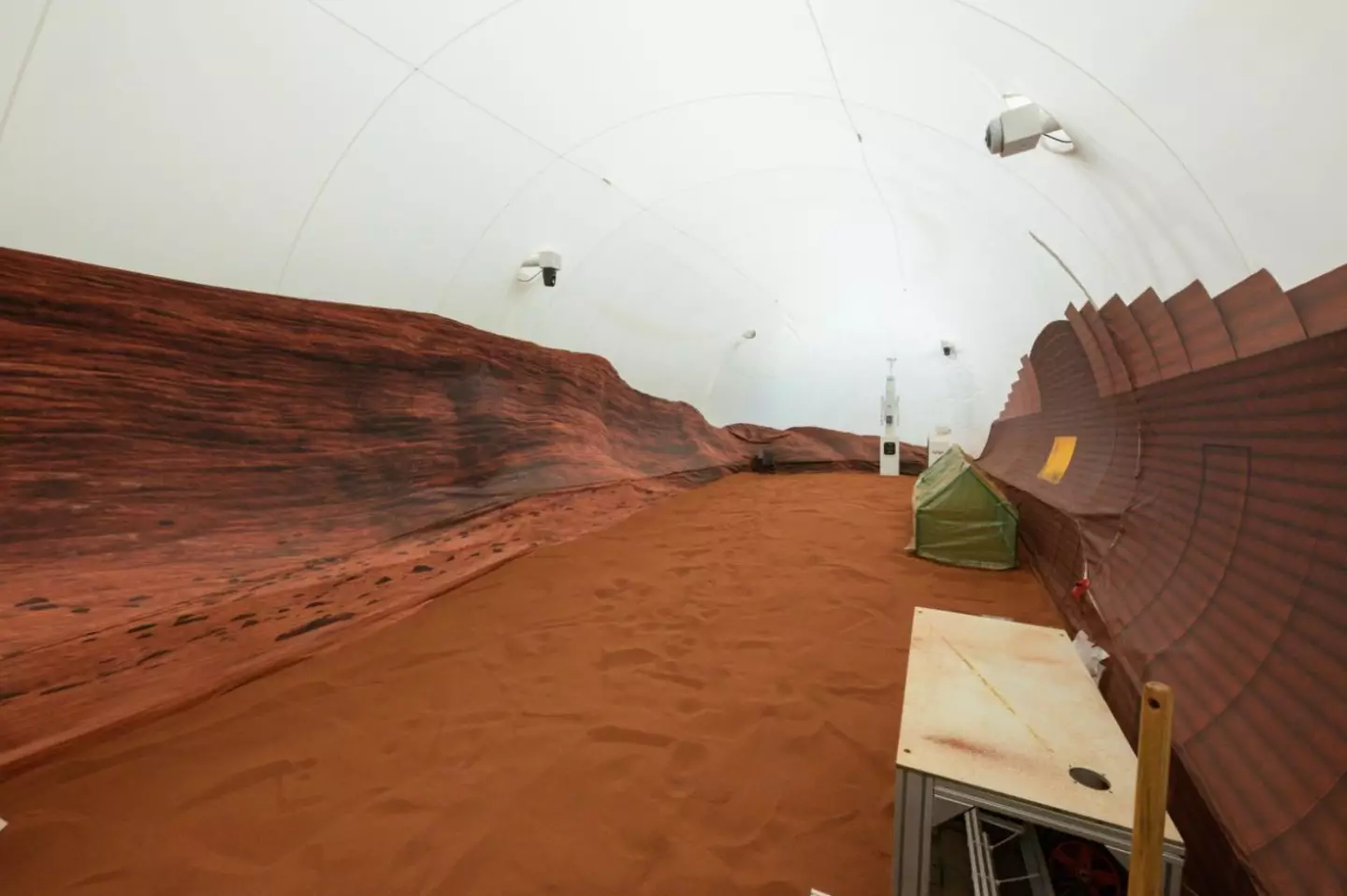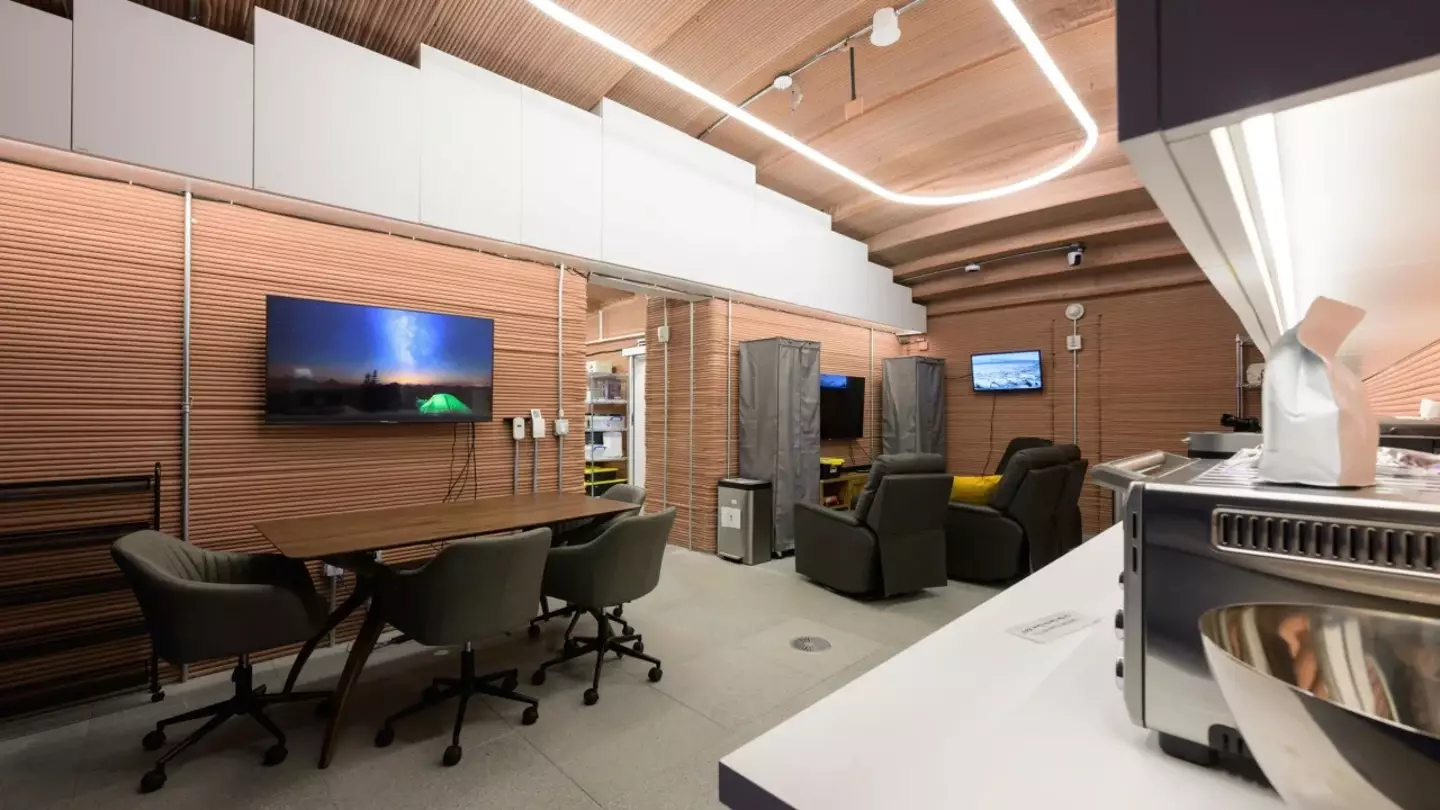
NASA is to run a simulation that will take more than a year and see a group of astronauts put through a mock-up mission to Mars, in the hope that lessons can be learned ahead of an attempt at the real thing.
For the experiment, they’re building a realistic Mars base, where four astronauts will spend 378 days, which is around the time that a manned mission to the Red Planet would spend on the surface.
NASA is calling it CHAPEA - the Crew Health and Performance Exploration Analog - and a fake Mars has been created in Texas, where the prospective astronauts will spend a year living, eating, and acting like Mars explorers, running simulations of tests, failures, and maintenance.
All the while, they’ll be analysed in almost all possible ways through their blood, saliva, faeces, and urine, as well as some serious psychological tests.
Advert

NASA hopes that the lengthy test will be able to prepare them for some eventualities - though not all can be simulated - ahead of a tilt at a real Mars mission in future.
It begins in June, and co-investigator Scott M. Smith explained: “We’ve built a high-fidelity Mars surface mission scenario.”
That means that not only is the place realistic, they’ll also have to deal with a 22-minute delay in comms with ‘Earth’ once they’re into the simulation.
Advert
They’ll also hear ambient noises through speakers, meaning they’ll be fully immersed and unable to experience the outside world.
Called ‘Mars Dune Alpha’ the base has been bespoke built by 3D printing group ICON and Bjarke Ingels Groupa at Johnson Space Center in Houston.
ICON CEO Jason Ballard said: "NASA has evaluated a tremendous number of options for off-world habitat construction - repurposed rockets and landers, inflatables, assembled buildings, etc.
“They’ve come to believe what we believe: that when you evaluate it from a financial, safety and flexibility standpoint, robotic construction using local materials is far and away the best option.”
Advert

For more than 12 months, the CHAPEA crew - scientists and engineers Kelly Haston, Ross Brockwell, Nathan Jones and Alyssa Shannon - will do everything.
All of this work is to fill in ‘Strategic Knowledge Gaps’ that currently affect the ability to run a genuine Mars exploration mission.
Smith explained that the ‘red’ risks are: “Radiation; SANS (Spaceflight-Associated Neuro-ocular Syndrome, a swelling of the eyeball that affects the majority of astronauts during long periods in microgravity); crew behavior and performance; and food and nutrition.
Advert
“Those are risks that in my mind represent things that, if we had a vehicle on the launchpad today to go to Mars, we would advise against the trip."
Now, they can’t test radiation and reduced gravity, but the rest can be done pretty much.
Even after they finish their mammoth test assignment, those involved will spend weeks at the center having checks done afterwards.
Advert
It’s a big commitment, as Smith admitted: “It takes a certain dedication to be willing to spend a year with us.
“Not everybody’s cut out for this mission.”
Perhaps when it’s all done they’ll have learned everything they need, and we can have a clearer timeframe of when a real Mars mission might be viable.